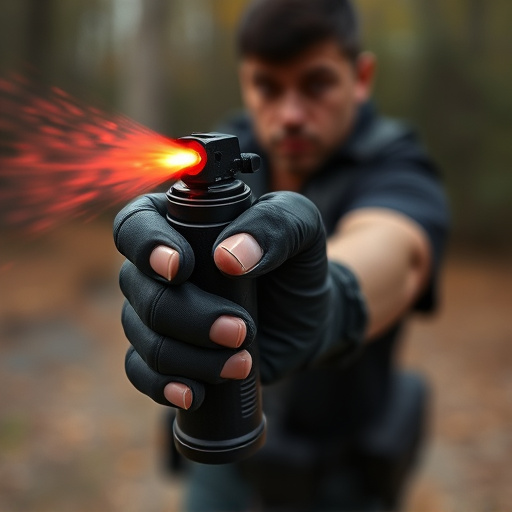Pepper spray and Tasers are critical tools for riot control, each with unique pros and cons. Pepper spray causes temporary blindness and respiratory distress, ideal in crowded spaces, while Tasers induce muscle paralysis for longer immobilization. Effective use requires understanding legal guidelines and proper training to balance public safety and individual rights, ensuring informed decisions based on threat levels. When used responsibly, both agents can enhance law enforcement capabilities in various scenarios, demonstrating their effectiveness in managing civil unrest.
Riot control agents, such as pepper spray and tasers, have become integral tools for law enforcement dealing with chaotic situations. This article delves into the intricacies of these powerful tools, offering an in-depth comparison between pepper spray and tasers in terms of effectiveness and impact. We also explore critical legal considerations and training protocols surrounding their use by law enforcement agencies, emphasizing responsible and effective riot control practices.
- Understanding Riot Control Agents: An Overview
- Pepper Spray vs Taser: Comparing Effectiveness and Impact
- Legal Considerations and Training in Law Enforcement Use of Force
Understanding Riot Control Agents: An Overview
Riot control agents are chemical substances or devices designed to disrupt, control, and disperse crowds during civil unrest, protests, or high-risk law enforcement operations. These agents play a significant role in maintaining public safety and order when traditional methods of crowd control prove ineffective. Understanding their mechanics and effects is crucial for both law enforcement agencies and the general public.
When comparing popular riot control tools like pepper spray and Tasers, effectiveness varies based on specific scenarios and individual factors. Pepper spray, a common choice, creates a burning sensation in the eyes and respiratory system, temporarily blinding and disorienting individuals. In contrast, Tasers (or stun guns) use electrical pulses to disrupt muscle control, causing temporary paralysis. Each has its advantages; for instance, pepper spray can be more effective in crowded spaces where proximity is crucial, while Tasers provide a longer-lasting immobilization, making them suitable for isolating and controlling individuals.
Pepper Spray vs Taser: Comparing Effectiveness and Impact
In the arsenal of riot control agents, pepper spray and tasers stand out as two prominent tools used by law enforcement for crowd management and self-defense. When comparing their effectiveness, it’s crucial to understand their distinct mechanisms and impacts. Pepper spray, a type of irritant, functions by causing temporary blindness, coughing, and difficulty breathing through the stimulation of nerve endings in the eyes and respiratory system. Its effects are rapid but typically last for a relatively short period, offering a chance for subjects to recover and continue resistance.
On the other hand, tasers employ electric current to disrupt muscle control, leading to temporary paralysis. Compared to pepper spray, tasers are generally considered more effective in de-escalating highly aggressive or violent individuals due to their ability to incapacitate targets swiftly and for a longer duration. However, the impact of both agents is multifaceted, with debates ongoing regarding their potential long-term effects on health and the ethical considerations surrounding their use, especially in crowd control scenarios.
Legal Considerations and Training in Law Enforcement Use of Force
In the realm of law enforcement, the use of force is a delicate balance between maintaining public safety and respecting individual rights. Legal considerations are paramount to ensure that officers act within the boundaries set by the law. Every jurisdiction has its own guidelines and regulations regarding the permissible levels of force, with specific rules for riot control agents like pepper spray and Tasers. These laws not only dictate when such tools can be employed but also mandate thorough training for officers to use them effectively and responsibly.
Training is crucial in understanding the nuances of force application, including the differences between pepper spray and Tasers in various scenarios. Officers must learn how these riot control agents differ in terms of effectiveness, reach, and impact. For instance, pepper spray can disrupt vision and breathing for a short period, while Tasers use electric shock to temporarily incapacitate a subject. Proper training enables law enforcement to make informed decisions, ensuring that their actions are proportional to the threat and minimize potential harm to both officers and civilians.
Riot control agents, such as pepper spray and tasers, are powerful tools in law enforcement, but their effectiveness and impact must be carefully considered. While pepper spray can quickly incapacitate individuals, tasers offer a more controlled and potentially less harmful alternative for certain situations. However, both weapons come with legal considerations and the need for extensive training to ensure responsible and proportional use. Understanding these nuances is essential for maintaining public safety and upholding legal standards in riot control scenarios.
